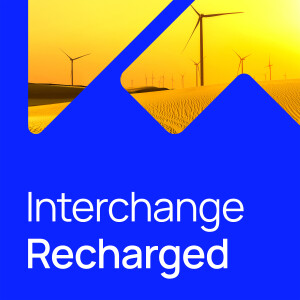
This week, we explore a possible financial time bomb for renewable energy: merchant risk.
Since the dawn of grid-connected wind and solar, long-term power purchase agreements were the financial glue that held projects together. Developers could rely on relatively simple multi-decade contracts, thanks in large part to policy that encouraged or mandated utilities to enter those agreements.
Today, things are a lot more complicated. It’s much harder to secure a long-term PPA, so more wind and solar projects are getting exposed to the risks of the market. Contract terms are being cut down to 10 years or less. And that means a vast majority of the electricity produced by those wind and solar projects must get sold on the competitive market.
Wind and solar face “covariance risk” — a negative relationship between electricity output and price. These resources must sell their electricity during the time of day when lots of other solar and wind farms are also generating, thus depressing wholesale prices.
In a not-so-distant future with high amounts of renewable energy, will developers be able to make money from their projects on the open market?
In this episode, we explore the risks of merchant wind and solar. We’ll talk about why contract terms are changing, what kind of hedging strategies have emerged, and why this trend matters.
Our guest is Christine Brozynski, a senior associate at the global law firm Norton Rose Fulbright. She’s represented lenders, sponsors and risk managers on gigawatts of wind, solar and gas deals worth billions of dollars.
The Interchange is brought to you by Uplight, the company you once knew as Tendril and Simple Energy.
The goal is still the same: To offer utility leaders a suite of engagement solutions that deliver customer experiences like Amazon and Netflix. Learn more about how Uplight is building an end-to-end product for utility customer engagement.
You can listen to Uplight’s 5-part podcast series, called ILLUMINATORS, about what utilities can learn from case studies of business disruption. Subscribe on Apple, Spotify, Google Podcasts, Stitcher, or anywhere else you get your podcasts.
More Episodes
 2021-12-10
2021-12-10
 2021-11-26
2021-11-26
 2021-10-09
2021-10-09
 2021-09-24
2021-09-24
 2021-09-16
2021-09-16
 2021-08-26
2021-08-26
 2021-08-13
2021-08-13
 2021-08-06
2021-08-06
 2021-07-30
2021-07-30
Create your
podcast in
minutes
- Full-featured podcast site
- Unlimited storage and bandwidth
- Comprehensive podcast stats
- Distribute to Apple Podcasts, Spotify, and more
- Make money with your podcast
It is Free
- Privacy Policy
- Cookie Policy
- Terms of Use
- Consent Preferences
- Copyright © 2015-2024 Podbean.com





